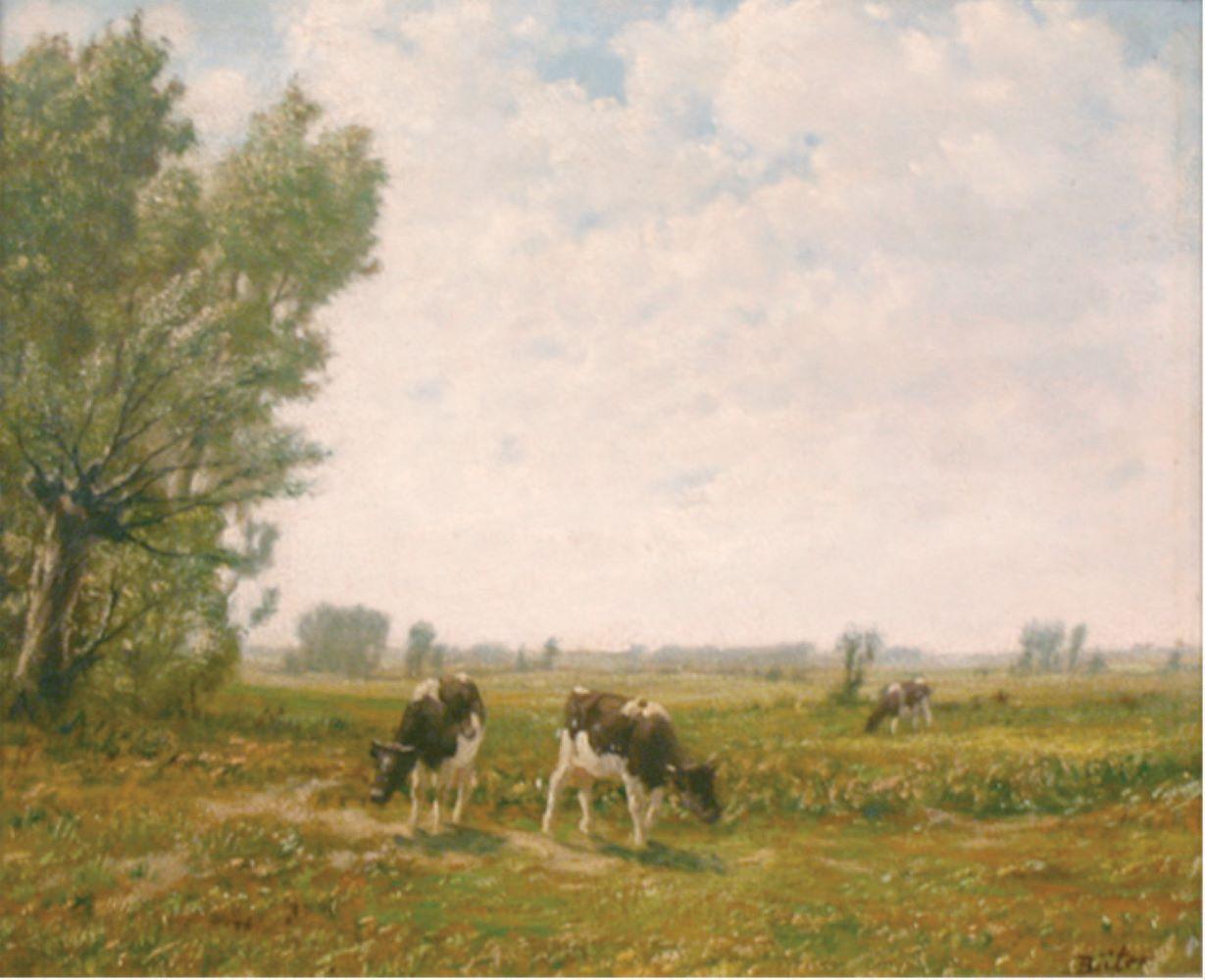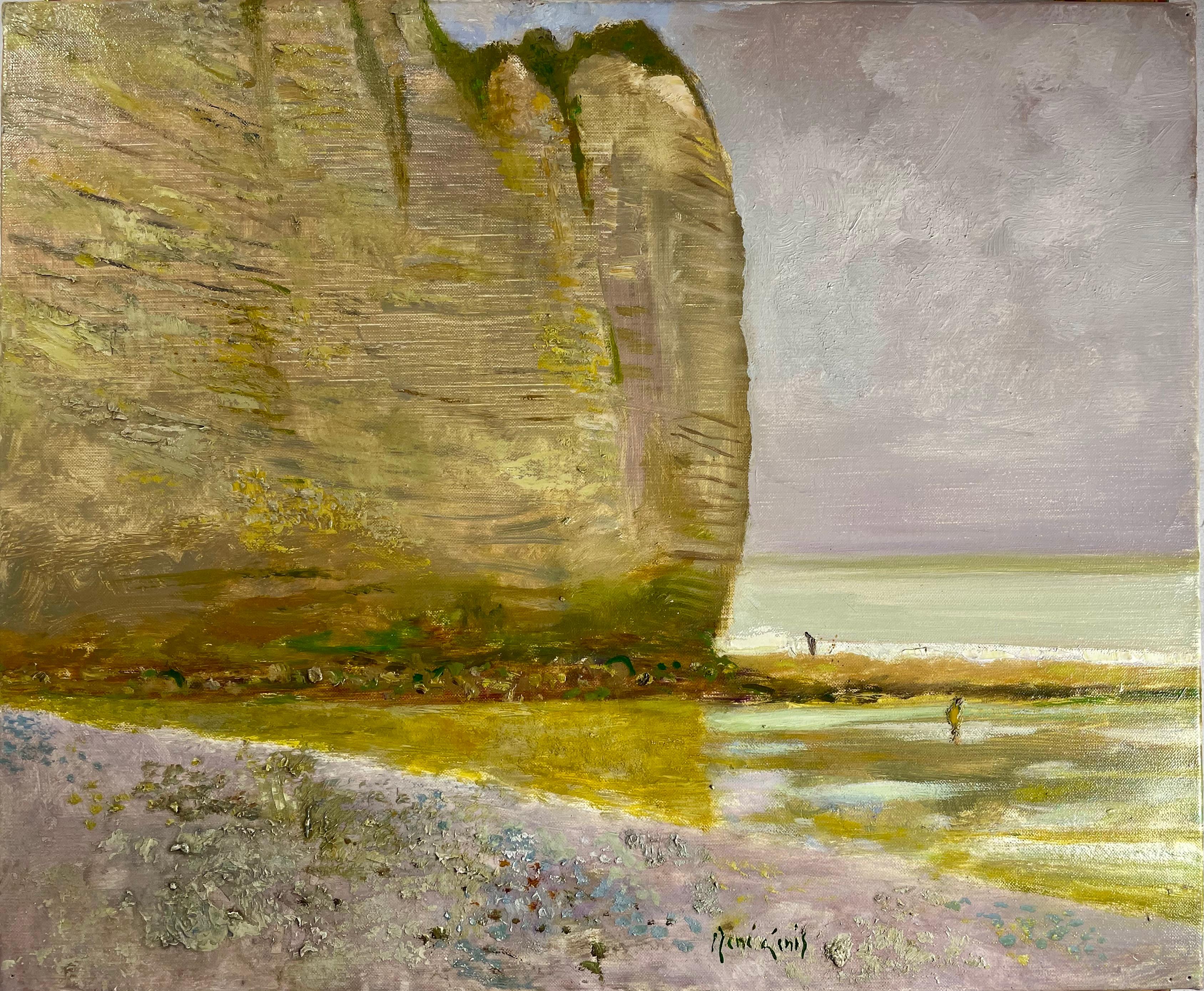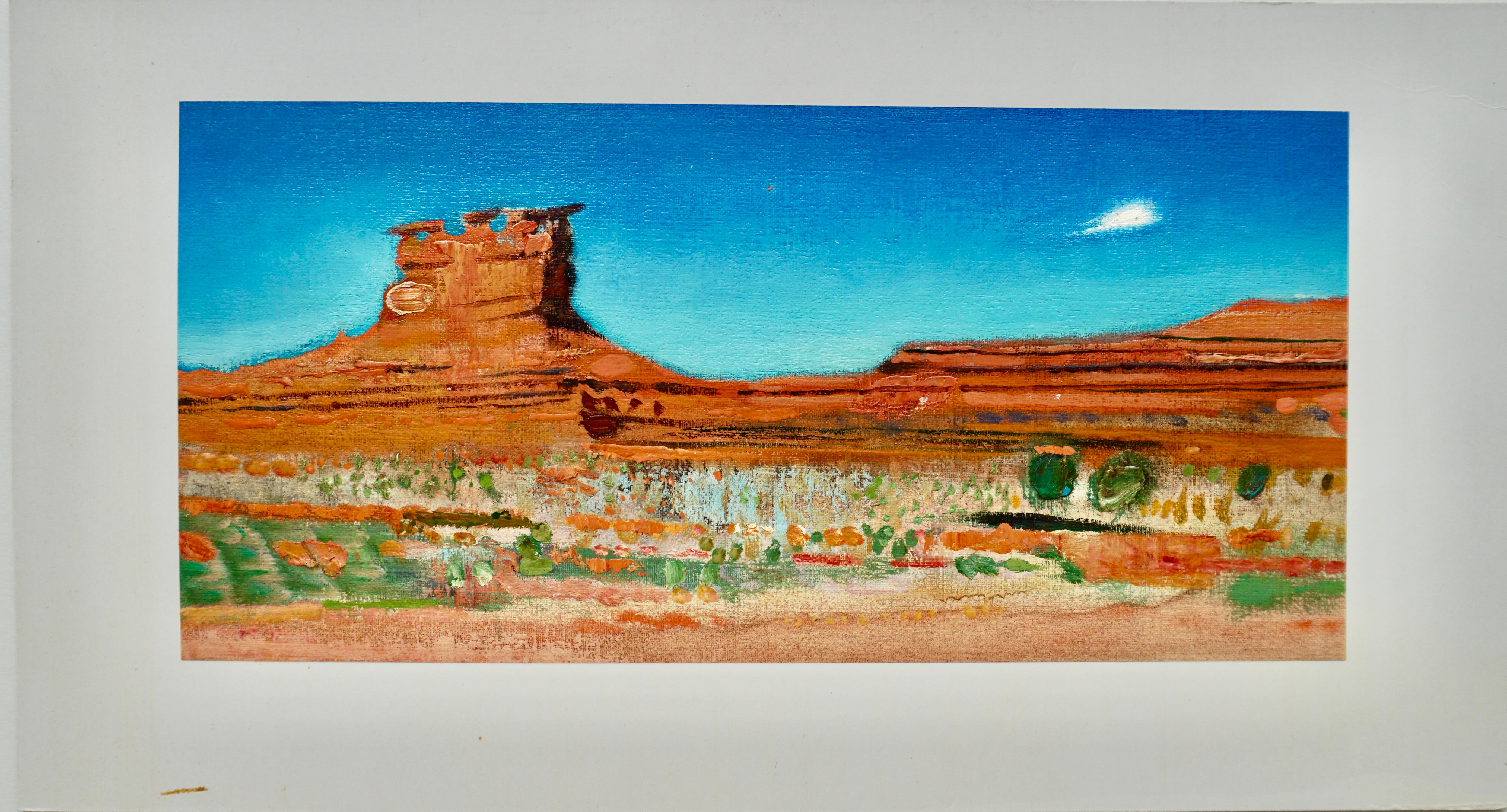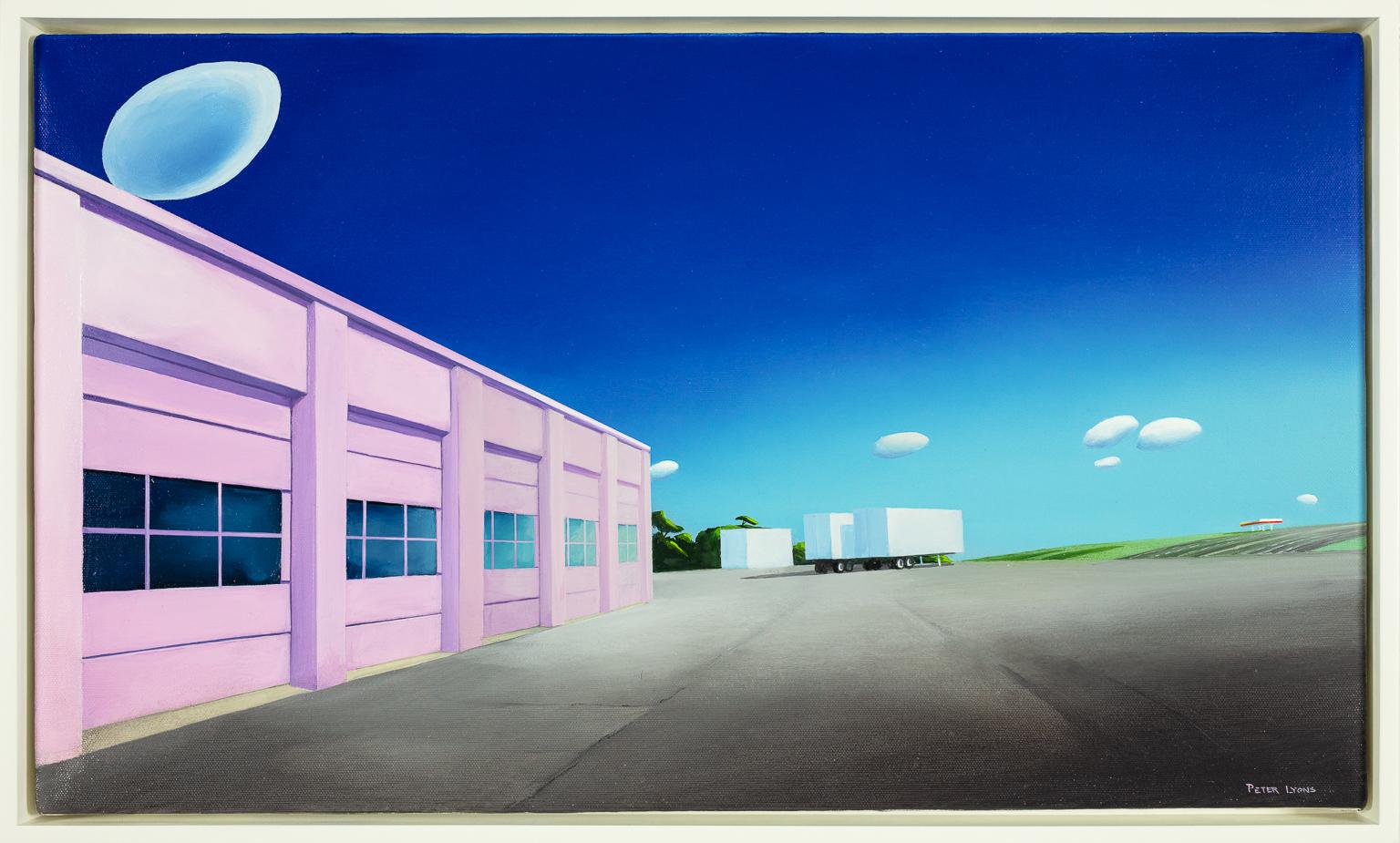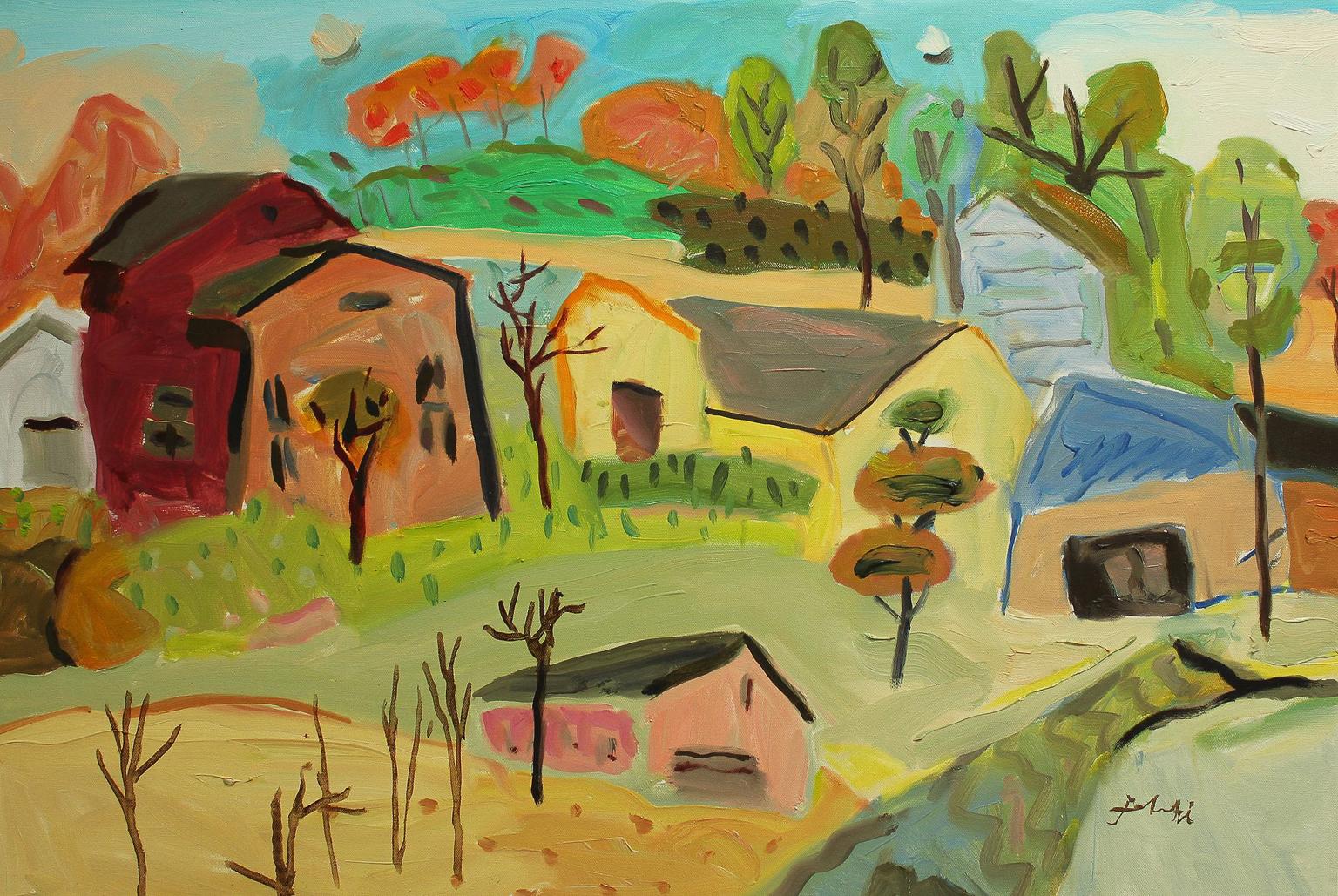Want more images or videos?
Request additional images or videos from the seller
1 of 5
Henry Hillingford ParkerOn The Severn
About the Item
Henry Hillingford Parker (1858-1930)
On The Severn
Oil on canvas, 59cm x 90cm / 78cm x 108cm
Born and based in London for most of his life, Henry H. Parker, also painted under the names H.D Hillier or H.D Hillyer. He is representative of the best in English Landscape painting at this time; with his skill and technique for capturing the detail and light of the pastoral genre and countryside scenes he is well known for. He was a successful and popular artist in his own lifetime. Parker studied at St. Martins school of art and at one of the Royal Academy schools, his work clearly shows the influence of the impressionist school and that of his well-known contemporary Benjamin Leader and he also worked part-time for the Illustrated London News.
- Creator:
- Dimensions:Height: 30.71 in (78 cm)Width: 42.52 in (108 cm)
- More Editions & Sizes:OriginalPrice: $16,209
- Medium:
- Period:
- Condition:
- Gallery Location:Lincoln, GB
- Reference Number:1stDibs: LU80517967102
About the Seller
No Reviews Yet
Vetted Seller
These experienced sellers undergo a comprehensive evaluation by our team of in-house experts.
1stDibs seller since 2017
8 sales on 1stDibs
- ShippingRetrieving quote...Ships From: Lincoln, United Kingdom
- Return PolicyA return for this item may be initiated within 14 days of delivery.
More From This SellerView All
- A Scottish LandscapeLocated in Lincoln, GBArthur H. Rigg (1859 -1915) A Scottish Landscape Oil on Canvas Signed Size: 146cm x 110cm framed. Arthur Herbert Rigg was born and lived in Bradfo...Category
Early 1900s Landscape Paintings
MaterialsCanvas, Oil
- Capping Em OnLocated in Lincoln, GBAlfred Charles Havell has become a renowned name for painting horses and sporting art. This is clearly evident in the painting of his that we currently have in our collection, depic...Category
Late 19th Century Landscape Paintings
MaterialsCanvas, Oil
- A Norfolk Landscape by Samuel David Colkett ( 1806-1863)Located in Lincoln, GBSamuel David Colkett ( 1806-1863) A Norfolk Landscape Oil on Canvas, 34 x 44cm / 53 x 63cm Original Frame Colkett was an artist, primarily of landscapes, working throughout East Anglia. He was a pupil of James Stark, and was associated with the Norwich School of painting, whose leaders were John Crome and John Sell Cotman...Category
19th Century Landscape Paintings
MaterialsOil, Canvas
- School Of Meindert Hobbema (1638 - 1709) Landscape With Cottage Oil On CanvasLocated in Lincoln, GBSchool of Meindert Hobbema (1638 - 1709) Landscape with Cottage Oil on Canvas. Framed 105cm x 92cm. A copy of a picture is held by the National Ga...Category
17th Century Landscape Paintings
MaterialsCanvas, Oil
- His Masters' SpanielsLocated in Lincoln, GBThis beautiful painting is a fine example of his animal paintings depicting a hunter with his catch of a hare alongside his two dogs, which is signed in the bottom right hand side. Otto Weber was a German genre...Category
19th Century Landscape Paintings
MaterialsCanvas, Oil
- British Farm Landscape by Alfred Walter Williams, Circa 1835Located in Lincoln, GBA beautiful depiction of a victorian British dairy farm and landscape, painted by Alfred Walter Williams (1824-1905). Oil on Canvas. 27” x 21” Framed. Signed lower right. Alfred Wal...Category
19th Century Landscape Paintings
MaterialsCanvas, Oil
You May Also Like
- Bernhard ButerLocated in Saint Augustine, FLArtist: Bernhard Buter (1883-1959) German Title: Rhinish Landscape Medium: Oil on Canvas Dimensions: Framed 19” x 21” , Unframed 11 x 13” Bernhard Buter paints agrarian landscapes i...Category
Early 20th Century Realist Landscape Paintings
MaterialsCanvas, Oil
- "Les Falaise Normande" (The Cliffs Of Normand)By René GenisLocated in Berlin, MDRene Genis (French 1922-2004) “Les Falaise Normande” / The Cliffs of Normand. A sea scape with high cliffs, the beach, and two fishermen. The cliffs are in browns, tans and olives a...Category
1990s French School Landscape Paintings
MaterialsCanvas, Oil
- "Monument Valley"By René GenisLocated in Berlin, MDRene Genis (French 1922-2004) Monument Valley. 1967. Beautiful oranges, browns, greens against a turquoise blue sky. Oil on canvas, laid on mat. Si...Category
Mid-20th Century Landscape Paintings
MaterialsOil, Canvas
- Early oil depicting the Great Fire of LondonLocated in London, GBThe Great Fire of London in September 1666 was one of the greatest disasters in the city’s history. The City, with its wooden houses crowded together in narrow streets, was a natural fire risk, and predictions that London would burn down became a shocking reality. The fire began in a bakery in Pudding Lane, an area near the Thames teeming with warehouses and shops full of flammable materials, such as timber, oil, coal, pitch and turpentine. Inevitably the fire spread rapidly from this area into the City. Our painting depicts the impact of the fire on those who were caught in it and creates a very dramatic impression of what the fire was like. Closer inspection reveals a scene of chaos and panic with people running out of the gates. It shows Cripplegate in the north of the City, with St Giles without Cripplegate to its left, in flames (on the site of the present day Barbican). The painting probably represents the fire on the night of Tuesday 4 September, when four-fifths of the City was burning at once, including St Paul's Cathedral. Old St Paul’s can be seen to the right of the canvas, the medieval church with its thick stone walls, was considered a place of safety, but the building was covered in wooden scaffolding as it was in the midst of being restored by the then little known architect, Christopher Wren and caught fire. Our painting seems to depict a specific moment on the Tuesday night when the lead on St Paul’s caught fire and, as the diarist John Evelyn described: ‘the stones of Paul’s flew like grenades, the melting lead running down the streets in a stream and the very pavements glowing with the firey redness, so as no horse, nor man, was able to tread on them.’ Although the loss of life was minimal, some accounts record only sixteen perished, the magnitude of the property loss was shocking – some four hundred and thirty acres, about eighty per cent of the City proper was destroyed, including over thirteen thousand houses, eighty-nine churches, and fifty-two Guild Halls. Thousands were homeless and financially ruined. The Great Fire, and the subsequent fire of 1676, which destroyed over six hundred houses south of the Thames, changed the appearance of London forever. The one constructive outcome of the Great Fire was that the plague, which had devastated the population of London since 1665, diminished greatly, due to the mass death of the plague-carrying rats in the blaze. The fire was widely reported in eyewitness accounts, newspapers, letters and diaries. Samuel Pepys recorded climbing the steeple of Barking Church from which he viewed the destroyed City: ‘the saddest sight of desolation that I ever saw.’ There was an official enquiry into the causes of the fire, petitions to the King and Lord Mayor to rebuild, new legislation and building Acts. Naturally, the fire became a dramatic and extremely popular subject for painters and engravers. A group of works relatively closely related to the present picture have been traditionally ascribed to Jan Griffier...Category
17th Century Old Masters Landscape Paintings
MaterialsOil, Canvas
- I-90, Natick, MassachusettsLocated in Gloucester, MAPeter Lyons’s technique approaches photographic realism, but the precision in his paintings is an attempt to communicate a state of awareness, rather than ...Category
2010s Contemporary Landscape Paintings
MaterialsCanvas, Oil
- Hillside BarnsBy Zygmund JankowskiLocated in Gloucester, MAZygmund Jankowski (1925–2009) painted traditional subjects with exuberant irreverence for traditional rules of color, composition, and perspective. He disparaged imitation and deligh...Category
1980s Contemporary Landscape Paintings
MaterialsCanvas, Oil
Recently Viewed
View AllMore Ways To Browse
Eugene Morelli
Fabius Brest
Frederick Linden
Frederick Pawla On Sale
Gabriel Deschamps On Sale
George Albach
George Ames Aldrich On Sale
George William Mote On Sale
Gerald Hodgson
Gerald Lopato
Germain Fabius Brest
Gilbert F Neumann
Ginette Rapp
Gloria Sáez On Sale
Gordon Lightfoot
Gordon Muck
Harold Shelton On Sale
Harry Aiken Vincent
